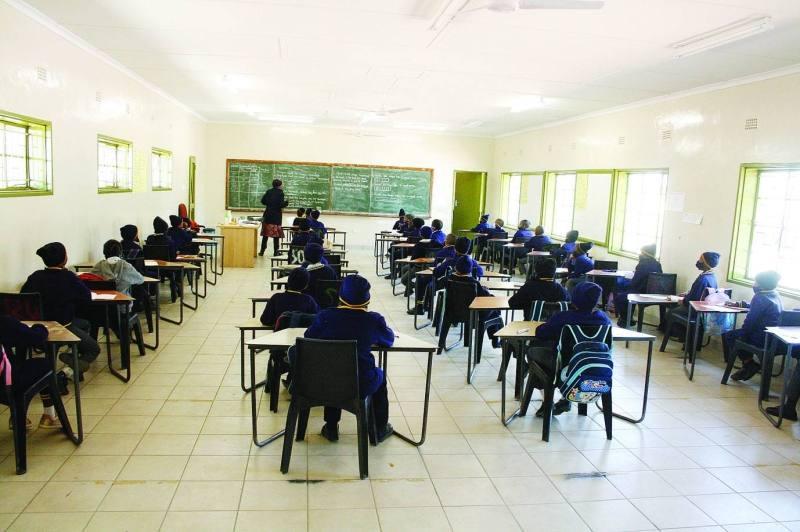Africa-Press – Botswana. Recently on social media, I was truly shocked to see corporal punishment being administered at a junior secondary school in Gaborone. The video showed one male teacher beating a female student on the buttocks whilst she was lying on the ground. Other teachers surrounded them, writes Mmegi Correspondent GRAHAME MCLEOD
TONOTA: Teachers face many challenges in their work, one of which is classroom discipline. In some cases, pupils have even threatened their teachers with knives and similar weapons. And that makes the classroom a potentially dangerous place where the safety of the teacher may be at stake. So, discipline in schools is now becoming an issue of growing concern.
However, this important aspect of teaching is sadly overlooked, or not fully dealt with, in our colleges of education. Student teachers may receive much instruction on methods of teaching or how to prepare teaching aids, but they may still leave college not equipped to deal with indiscipline in the schools where they will later teach. School discipline simply refers to the actions taken by the school towards students when their behaviour disrupts educational activity, or breaks school rules.
Indiscipline is a disease, and like other diseases such as malaria and COVID-19, there are two ways in which we can deal with it. Firstly, measures that we can put in place to control, or contain indiscipline when it occurs and, secondly, what we can do to prevent indiscipline from rearing its ugly head in the first place. In this article, we will look at ways in which teachers can contain indiscipline when it occurs in the classroom.
Corporal punishment involves the use of a stick, cane or strap, as was done at the school mentioned above. According to the Education Act, only school heads, and not usually teachers, are authorised to use corporal punishment and even then they must be careful in administering it. For female students, up to five beatings are allowed but only on the palms of the hands. In the case of boys, up to five beatings on the buttocks are allowed. Also, the Act states that the stick must be of a certain length – no more than one metre – and diameter, no more than one centimetre. And the Act also forbids male teachers to beat female students. Such punishment must be recorded with details of the offender’s name and the nature of the offence that he or she has committed. Also, a witness must be present. So, on two counts, the male teacher in the video broke the Education Act.
And if beating results in physical injury or wounds to the body, then it will be a case of assault, which could put a head in hot soup since the students’ parents may now decide to take possible legal action against him which might lead to a fine or demotion. And class teachers use corporal punishment at their own risk! Several years ago, I taught at Lobatse Secondary School. Here I often saw cases where teachers would go to class late only to find their students making so much noise. They would then ‘punish’ them by getting them to line up outside the classroom and then beat each one of them even if some were not making noise. But perhaps, the teachers should have been beaten instead! Had the teacher arrived in class on time then the pupils would not have had time to make noise! Such teachers are sadists and see their pupils as punching bags, similar to those that one might see in a gym and which are used by boxers as part of their training. They are a disgrace to the teaching profession and should never be entrusted with the care of children. These days, corporal punishment is being discouraged and teachers and heads are strongly advised to use other methods of disciplining pupils in schools. Indeed, many professionals, including the Botswana Teachers Union (BTU), now regard corporal punishment as archaic and barbaric and should be abolished. And it dehumanises children.
Proponents of corporal punishment often refer to verses in the Bible to support their beliefs. For example, Proverbs 13 v.24: ‘He who spares the rod hates his son, but he who loves him is careful to discipline him.’ And also Proverbs 29 v.15: ‘The rod of correction imparts wisdom, but a child left to itself disgraces his mother.’ Such people also point to the growing indiscipline that we see in our schools these days and some pupils even bring weapons, such as knives, to school to inflict harm on their peers and even their teachers. Some may even say that our children are now not controllable.
But in the New Testament, we read in the letter of Paul to the Colossians ch.3 v.21: ‘Fathers, do not provoke your children, lest they become discouraged.’ Beating a child can so easily lead him to become discouraged and to think of himself merely as an object that can be tossed around at his father’s pleasure! These days, moderation is called for!
Let us now consider non-corporal means of punishing children in schools. If a child is disruptive in class, then a teacher can get him to kneel, squat or stand alone outside the classroom, or in the corner. But it is important that the punishment is carried out of sight of the pupil’s classmates otherwise he may be humiliated, mocked or embarrassed. When I was a lecturer at Tonota College of Education (TCE), I always insisted that our student teachers should consider carefully how they discipline their pupils whilst they were out on teaching practice in schools. And the use of corporal punishment would guarantee a fail grade for the lesson in which I would be assessing them. In one Business Studies lesson at a junior secondary school in Maun, one pupil was talkative in class and the student teacher told him to come up to the front and bring his chair with him. She then instructed him to hold the chair by one of its legs and to raise it above his head for 10 minutes. I did not fail her; it did the trick.
I once taught Agriculture at Matshekge Hill Secondary School in Bobonong. My HoD had come up with an imaginative and novel way of dealing with talkative pupils in his classes. He would tell such pupils to go into the adjacent Agriculture storeroom. Here he told them to stand, bend down, put their arms behind their body and then put them between their legs and touch their ears with their hands. And one needed to have a supple body to be able to do this effectively! They would remain in that position for perhaps 10 minutes before returning to class. At times, up to a dozen students would be doing the exercise at the same time. But the punishment seemed to work! Of course, he would have to be careful since some students might not be able to touch their ears; so, he allowed them simply to put their arms between the legs. Perhaps, readers could try this out! Other pupils would stand on one leg in the storeroom.
In some lessons, we would send the pupils to do practical work in the school garden. We might supervise them there for a short time and then return to the storeroom to give them the idea that they could relax and stop working without being seen. But some of them were in for a shock! Although the garden was some 100 metres away from the storeroom, with the aid of a pair of binoculars we could focus on them and identify the idlers! They would then be subjected to a spot of acrobatics in the storeroom! Disruptive students could also undertake community service or do some work around the school campus, for example, cleaning, weeding… In this way, others would benefit.
Detention is a common punishment meted out in schools in many Western countries. Here pupils are told to report to a designated room, usually after school, or even on a Saturday morning. Once there, their punishment would fit their misdemeanour. For example, if they are being punished for talking in class, then they might be asked to write an essay on why pupils should not talk in class, or write 100 lines, each line with the same sentence: ‘I must never talk in class.’ But this method has a downside; teachers may see administering detention as punishment themselves since they will now have to work after hours when they could be doing something else at home.
I used to teach at Maru-a-Pula school several years ago. Here no teacher, or head, ever carried out corporal punishment. I was a boarding master at the time and the head of the boys hostel (also a teacher) would use counselling as a means of discipline. If one boy refused to cooperate in cleaning the hostel, then during a one-to-one counselling session he would be helped to recognise his mistake and to see the importance of keeping the hostel clean and what might happen if the hostel was always dirty; for example, it might attract rats and snakes. The hostel head would then come up with positive ways to change the students’ mindset and to cooperate better with his peers in future.
In more serious cases, a disruptive pupil might be suspended from school for a few weeks. This means that he will be banned from entering the school grounds and so will not be taught. And he will be barred from taking part in the school’s after-school activities. So, the pupil when he returns will have to spend much time catching up with his studies and this might deter him from committing similar offences in future. The school head will have to notify the students’ parents of the reason and duration of the suspension.
Expulsion is the last resort where all other methods of discipline have failed – here a pupil will be forced out of school and will not be allowed to return. And it may be used for a single offence that is very serious, such as burning down a classroom, drug trafficking, and a serious assault on teachers… And such offences might be criminal in nature where the police would also be involved.
Recently, students at schools in Shoshong and Masunga have deliberately spread coronavirus by smearing tables and books with saliva. Their aim was to infect as many of their fellow pupils and teachers with the virus so that the school might be closed down and they can rest at home. Such pupils should be suspended or even expelled. Even if, according to the law, they are minors they knew what they were doing!
One alternative to expulsion is rehabilitation, or youth detention centres. Rehabilitation is simply the process of re-educating and retraining those who have committed offences. It generally involves psychological approaches which aim to re-integrate offenders back into normal society.
Finally, schools need to set up disciplinary committees that are composed of teachers overseen by the pastoral department. Cases of serious discipline may then be brought to them by teachers and the committee will then mete out appropriate discipline.
For More News And Analysis About Botswana Follow Africa-Press






